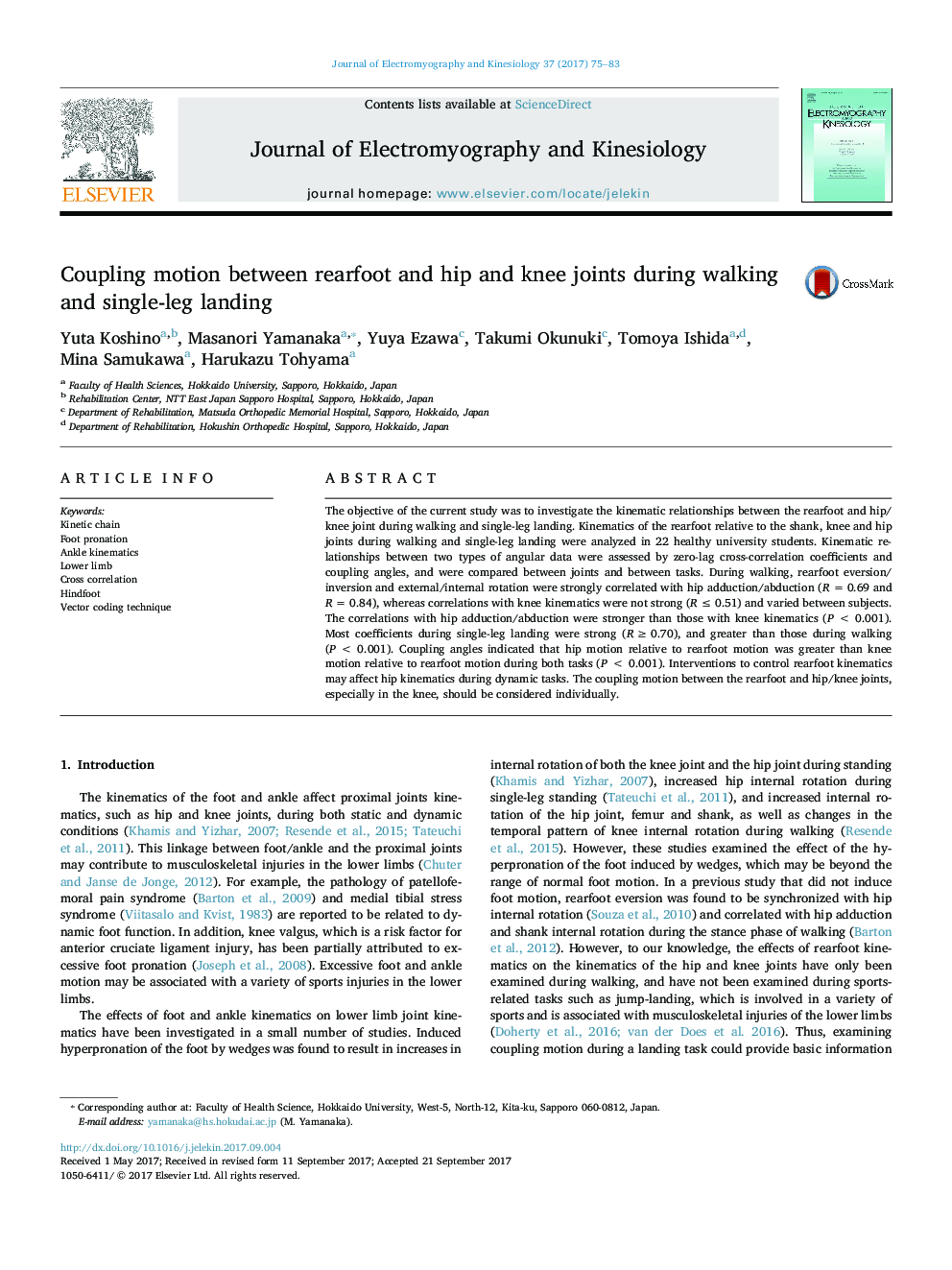| Article ID | Journal | Published Year | Pages | File Type |
|---|---|---|---|---|
| 5709461 | Journal of Electromyography and Kinesiology | 2017 | 9 Pages |
Abstract
The objective of the current study was to investigate the kinematic relationships between the rearfoot and hip/knee joint during walking and single-leg landing. Kinematics of the rearfoot relative to the shank, knee and hip joints during walking and single-leg landing were analyzed in 22 healthy university students. Kinematic relationships between two types of angular data were assessed by zero-lag cross-correlation coefficients and coupling angles, and were compared between joints and between tasks. During walking, rearfoot eversion/inversion and external/internal rotation were strongly correlated with hip adduction/abduction (R = 0.69 and R = 0.84), whereas correlations with knee kinematics were not strong (R â¤Â 0.51) and varied between subjects. The correlations with hip adduction/abduction were stronger than those with knee kinematics (P < 0.001). Most coefficients during single-leg landing were strong (R â¥Â 0.70), and greater than those during walking (P < 0.001). Coupling angles indicated that hip motion relative to rearfoot motion was greater than knee motion relative to rearfoot motion during both tasks (P < 0.001). Interventions to control rearfoot kinematics may affect hip kinematics during dynamic tasks. The coupling motion between the rearfoot and hip/knee joints, especially in the knee, should be considered individually.
Related Topics
Health Sciences
Medicine and Dentistry
Orthopedics, Sports Medicine and Rehabilitation
Authors
Yuta Koshino, Masanori Yamanaka, Yuya Ezawa, Takumi Okunuki, Tomoya Ishida, Mina Samukawa, Harukazu Tohyama,
